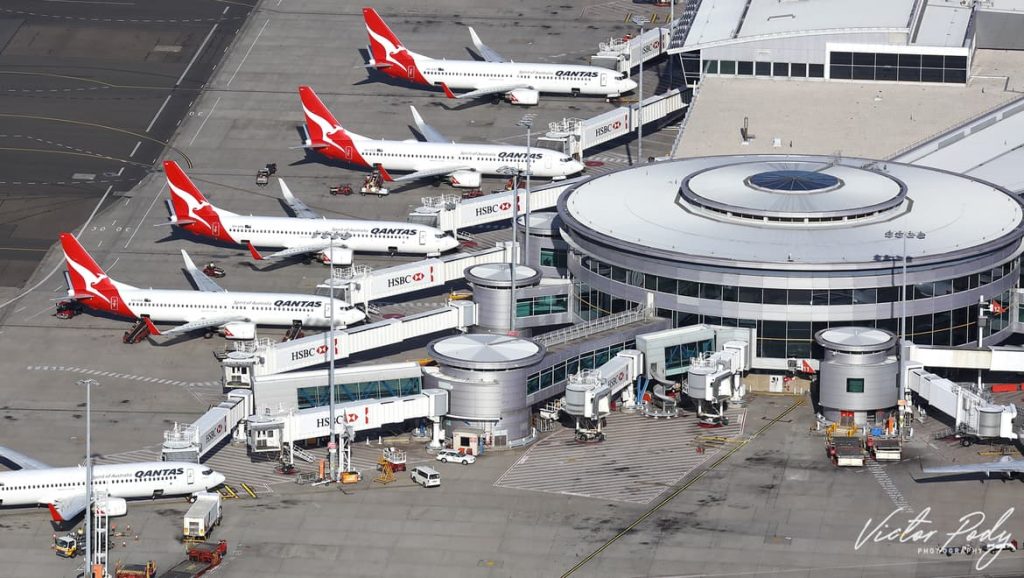
Qantas has posted an underlying loss before tax of $1.83 billion, due to “diabolical” operating conditions and sudden border closures in the second half of the financial year.
This is despite the airline receiving over $1.1 billion in government aid through multiple financial aid programs, including $558 million in JobKeeper wage subsidies.
Qantas also received a combined $188 million through the Regional Airline Network Support (RANS) and Domestic Aviation Network Support (DANS) programs, as well as Qantas’ overseas repatriation efforts on behalf of the government.
Meanwhile, the airline said its total revenue loss amounted to $16 billion for the full year due to COVID-related disruptions including prolonged international border closures and “multiple waves” of domestic border restrictions.
Qantas reported a staggering statutory loss before tax, which includes one-off costs such as redundancy payouts and aircraft writedowns, of $2.35 billion.
“This loss shows the impact that a full year of closed international borders and more than 330 days of domestic travel restrictions had on the national carrier,” Qantas CEO Alan Joyce said, adding that operating conditions have “frankly been diabolical”.
“It comes on top of the significant loss we reported last year and the travel restrictions we’ve seen in the past few months. By the end of this calendar year, it’s likely COVID will cost us more than $20 billion in revenue,” Joyce said.
The flag carrier introduced $650 million in permanent long-term cost reductions over the year, with the aim of reaching $1 billion in permanent annual savings by FY23.
Over 9,400 people have permanently left Qantas since the beginning of the pandemic, more than the 8,500 previously forecast by the airline.
According to Qantas, the additional staff losses were driven by offshore job losses at airports and sale offices, the introduction of some automation, and an increase in voluntary redundancies.
Over 8,500 employees currently remain stood down from their duties, 6,000 of which are tied to Qantas’ international operations.
“We have had to make a lot of big and difficult structural changes to deal with this crisis, and that phase is mostly behind us. As a result, we’re geared to recover quickly, in line with a national vaccine rollout that is speeding up,” Joyce said.
“Things remain tough, especially for thousands of our people waiting to return to their jobs when borders open and hopefully stay open. Our focus is getting them back to work as soon as possible.”
The airline remained confident that both international and domestic borders are “on track” to open by December 2021 off the back of Australia’s current fast-paced vaccine rollout.
According to projections completed by the airline, Australia is set to reach 80 per cent vaccination in its adult population by December, allowing both state and international border restrictions to ease.
However, Qantas did note that the international re-opening is likely to be “gradual”, with a focus on low-risk countries first, including those with high vaccination uptake including the UK, US, and parts of Asia.
From mid-December, Qantas and Jetstar will reinstate international schedules between Australia and low-risk countries, including Singapore, the US, Japan, the UK, Canada and Fiji.
The airline is also reinstating services between Australia and New Zealand, projecting a re-start of the currently paused trans-Tasman travel bubble, also in December.
Meanwhile, Qantas has pushed back its planned return to higher-risk destinations, such as Bali, Bangkok, Manila and Johannesburg, until April 2022.
“The prospect of flying overseas might feel a long way off, especially in New South Wales and Victoria in lockdown, but the current pace of the vaccine rollout means we should have a lot more freedom in a few months’ time,” said Joyce.
“It’s obviously up to the government exactly how and when our international borders re-open, but with Australia on track to meet the 80 per cent trigger agreed by National Cabinet by the end of the year, we need to plan ahead for what is a complex restart process.”
“There’s a lot of work that needs to happen, including training our people and carefully bringing aircraft back into service. We’re also working to integrate the IATA travel pass into our systems to help our customers prove their vaccine status and cross borders,” the airline chief added.
“We can adjust our plans if the circumstances change, which we’ve already had to do several times during this pandemic. Some people might say we’re being too optimistic, but based on the pace of the vaccine rollout, this is within reach and we want to make sure we’re ready.”















